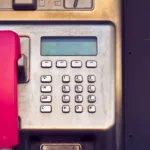Even as blockchain technology promises to cause significant changes in banking and financial services, it also promises to open new doors to financial inclusion for some 2 billion people around the world – transforming lives and economies in the process.
Blockchain is the technology that drives cryptocurrencies like Bitcoin. It works in a way that allows direct, peer-to-peer transactions without traditional intermediaries like banks. That makes it a major boon to those without access to a financial infrastructure to establish savings accounts, debit and credit cards or payment systems – or, in other words, half the world’s adult population.
Even a basic bank account, the World Economic Forum reports, will raise a person’s standard of living as the ability to save ultimately translates into the ability to borrow to finance an education, a business or a home.
But while blockchain can remove some of the barriers to bankability, Bo Zou, a Toronto-based digital user experience specialist, cautions that there’s more to solving the issue. “What is missing from the equation is the means of making blockchain-driven financial systems accessible,” Toronto’s Bo Zou says.
The growth of mobile device use makes that issue easier to address. Statistica reports that the number of mobile phone users around the globe should advance to over 5 billion by next year. But there’s still a digital divide. Even though smartphone adoption in developing nations had risen by 21 percent in 2013 to 37 percent, Pew Research Center shows, it’s far short of adoption in advanced economies.
Even so, mobile technology is bringing a substantial number of the previously unbanked into the financial system, even without blockchain. Sub-Saharan Africa, for example, accounts for vast numbers of people without cell or Internet service. But services like M-Pesa, launched in 2007 in Kenya to allow money transfers via text, are being replicated in sub-Saharan countries. Today, 61 percent of Kenyans with cell phones use them to make or receive payments – a worthy goal in parts of Africa still underserved.
Bo Zou points out that it’s not just smart phones and the cellular infrastructure that are necessary for blockchain-enabled access to the financial system. “Right now, the ecosystem is scattered,” he says. “We have a long way to go in building it up. No one really owns it now or knows how or where to start.”
He believes leadership is needed to advance accessibility on several fronts:
· Continued progress on expanding digital mobility, with affordable devices, easy and renewable energy sources to power them and enhanced Internet availability.
· Expanding awareness and deployment of blockchain technology, through education, new applications and crowdsourcing innovation.
· Driving the creation of a holistic, peer-to-peer financial ecosystem that rests such elements on easy point-of-sale systems, mobile payments, micro-loans and investments.
One of the biggest challenges, Bo Zou believes, comes down to the issue of user experience with a blockchain-driven banking system. “It’s going to take user experience design and thinking to bring this ecosystem together,” he says.
Bo Zou adds: “When you are talking about populations that are not well-educated or familiar with technology or banking, it’s absolutely essential to make technology easy to access and manage. We have a way to go to make this work. But we are moving forward fast.”








